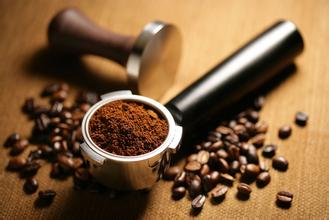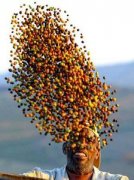The word meaning of coffee beans on the package to understand coffee beans from the label
Professionals all know that there may be great differences in the flavor of coffee beans from different years and different producing areas. Professional roasters will taste the raw coffee beans from different producing areas every year, and adjust the way of roasting and blending, so that consumers can get products with stable flavor and little difference. Sometimes, when you walk into a coffee store, you will be confused by the dazzling variety of coffee names. Why do coffee beans have such a long name? Why is there a single item, deep roast and Italian style of coffee? Where did so many names come from?

1. Indication of origin: "single product" and "comprehensive" coffee
The coffee beans sold in the market can be roughly divided into two categories: single coffee (Single Origins- referred to as S.O) and mixed coffee (Coffee Blends).
"single coffee" generally refers to a single style of coffee beans from a single country or producing area. It can be compared to a coffee solo.
If a bag of coffee is marked with the name of a coffee-producing country (coffee beans are not produced in continental Europe, and if the label says the names of European cities such as Italy, Vienna, etc., it is not individual coffee.) Generally speaking, it means that this is a bag of individual coffee. Such as Ethiopia-Ethiopia Yirgacheffe, Sumatra-Batactenin (Sumatra Blue Batak), Guatemala-Antigua (Guatemala Antigua) and so on, the specific coffee produced in specific countries, producing areas and estates is called "single coffee". Because each country or different region has its own climate, soil and natural environment, the coffee grown has its own characteristics. By tasting "individual coffee", you can understand the characteristics and flavor of coffee in a country or region.
"mixed coffee" refers to coffee beans mixed with several types of single coffee, which can be compared to a coffee concerto.
For example, the products of Huangding Coffee: blue Coffee, Duck Coffee, Capri Coffee and so on. The blending method of integrated coffee can be very simple (such as the traditional "Mamba": Mantenin plus Brazil), or it can be a complex art. Through proper blending, we can make a more harmonious and wonderful movement of each kind of coffee. Usually, the beans used in espresso (espresso, latte, cappuccino) are mixed coffee.
2. Marking of baking degree: deep baking, southern Italian, northern Italian, Vienna, French baking
In addition to the labeling related to the place of origin, the most common is the marking of baking degree. Raw coffee beans need to go through the roasting process to release their unique charming aroma, and the roasting of coffee is closely related to its flavor.
If you see "Italy", "Vienna", "Nanyi" and other signs on the coffee label, do not mistakenly think that the coffee beans have anything to do with the above place names-probably not, because traditionally, "Italy" and "Vienna" are synonymous with the degree of roasting (or blending) and do not mean that they are made in Italy or Vienna (as mentioned above). Coffee beans are not grown and produced in Europe. "Northern Italy" usually refers to medium-light, light brown, unoiled baking of beans; "Southern Italian" usually refers to the deep baking of bright oil and dark brown on the surface of beans; and "Italian baking" generally refers to deeper baking. "French baking (French Roast)" generally refers to the extremely deep baking with a near-black color, slightly coke flavor and no acid. "Vienna" and "Mirangchi" usually refer to mixed coffee made from coffee beans of different roasting degrees.
The deeper the degree of baking, the higher the temperature of the roasting. Generally speaking, the medium-to-shallow "Northern Italy" baking flavor is bright and light, may have fruit-like acidity, and has very little or no bitterness. Deep high temperature baking "Nanyi" baking flavor is low, full-bodied and smooth, with a caramel-like sweet finish. The flavor of "French baking" is monotonous, with a slightly coke flavor and no acidity at all.
3. The grading of coffee beans, small producing areas, farms, and other coffee producing areas around the world are not unified. Each coffee producing country has its own grading system and grading name, so you may see the following words "SHB", "AA+", "Supremo", "Extra-Fancy", "round bean / adzuki bean" and so on on the coffee label. These are the grading names of coffee beans. Baked beans on the market are sometimes marked with the grading of a single item of coffee, usually not.
Central American coffee is graded on the basis of planting altitude, and coffee beans above 4500 feet above sea level are marked "SHB (Strictly Hard Bean)". "AA+" is the highest grade of Kenyan coffee, and only batches with particularly good flavor and few defects are allowed to be labeled "AA+". "AA" is the largest, "AB" is smaller, and "PB" is round beans. Colombia in South America uses the appearance size and defect rate of coffee beans as the grading standard, and "Supremo" represents the largest grain. It is worth noting that the appearance size of coffee beans has nothing to do with the flavor. The higher the altitude, the better the flavor.
The name of the country is immediately followed by the marking of small producing areas. Take Ethiopia-Ethiopia (Ethiopia Yirgacheffe) as an example. Ethiopia's Ethiopia is the name of the coffee-producing country, indicating that it is a "single coffee"; Yega Chefe Yirgacheffe is a narrow and small producing area at high altitude in the Sidamo district of Ethiopia. Different small producing areas mean different flavor characteristics. For example, the famous Ethiopia-Haramoka (Ethiopia Harrar) is produced in southern Ethiopia near Somalia. Haramoka has wine-like aromas, blueberry or grape flavors, thick palate, fresh and bright Yega snow coffee, citrus or lemon peel aromas, and a thin palate.
However, some coffee beans have a list of names immediately after the name of a small producing area, which may be the name of a coffee farm, cooperative, or raw bean processing plant.
The long list of names such as Guatemala-Antigua-Los Mokens (Guatemala Antigua SHB- Finca Los Volcanes 08 Crop) tells us the following:
Producing country: Guatemala-Guatemala is a famous coffee producer in Central America.
Producing area: Antigua (Antigua)-this is the famous volcanic coffee producing area of the country.
Grading: extremely hard beans (SHB)-indicates that this coffee grows at an altitude of more than 4500 feet.
Production Manor: Finca Los Volcanes Manor-"Finca" is the Spanish word for "Estate", meaning farm.
Harvest year: 2008-year is a reference for bakers, so the year is usually not marked on the baked bean label on the market.
In the coffee beans sold on the market, in order to reduce the trouble and identification burden of consumers, they generally do not make such complicated labels.
Important Notice :
前街咖啡 FrontStreet Coffee has moved to new addredd:
FrontStreet Coffee Address: 315,Donghua East Road,GuangZhou
Tel:020 38364473
- Prev

The roasting technique of coffee beans the skill of baking mantenin
I have mentioned before that Mantenin's raw beans are rich in water and dark in color, so it is difficult to bake evenly. (so medium-baked beans don't sell well, which is one of the reasons why Taiwanese bakers bake deep.) The methods of improvement are as follows: 1. Leave the raw beans for another half a year and let them dry naturally. Brother 2.Leaves said that you can bake for a minute (based on the principle that it hasn't turned yellow yet). Force out some water
- Next

The method of storing coffee powder in a place suitable for storing coffee
With the increase of time and processing procedures, the life of coffee will be reduced; the appropriate storage method can prolong the shelf life of coffee. Coffee should be stored in a dry, cool place, not in the refrigerator, so as not to absorb moisture. Coffee beans and ground coffee can be frozen, the only thing to pay attention to is that when taking coffee out of the freezer, you need to
Related
- Beginners will see the "Coffee pull flower" guide!
- What is the difference between ice blog purified milk and ordinary milk coffee?
- Why is the Philippines the largest producer of crops in Liberia?
- For coffee extraction, should the fine powder be retained?
- How does extracted espresso fill pressed powder? How much strength does it take to press the powder?
- How to make jasmine cold extract coffee? Is the jasmine + latte good?
- Will this little toy really make the coffee taste better? How does Lily Drip affect coffee extraction?
- Will the action of slapping the filter cup also affect coffee extraction?
- What's the difference between powder-to-water ratio and powder-to-liquid ratio?
- What is the Ethiopian local species? What does it have to do with Heirloom native species?

